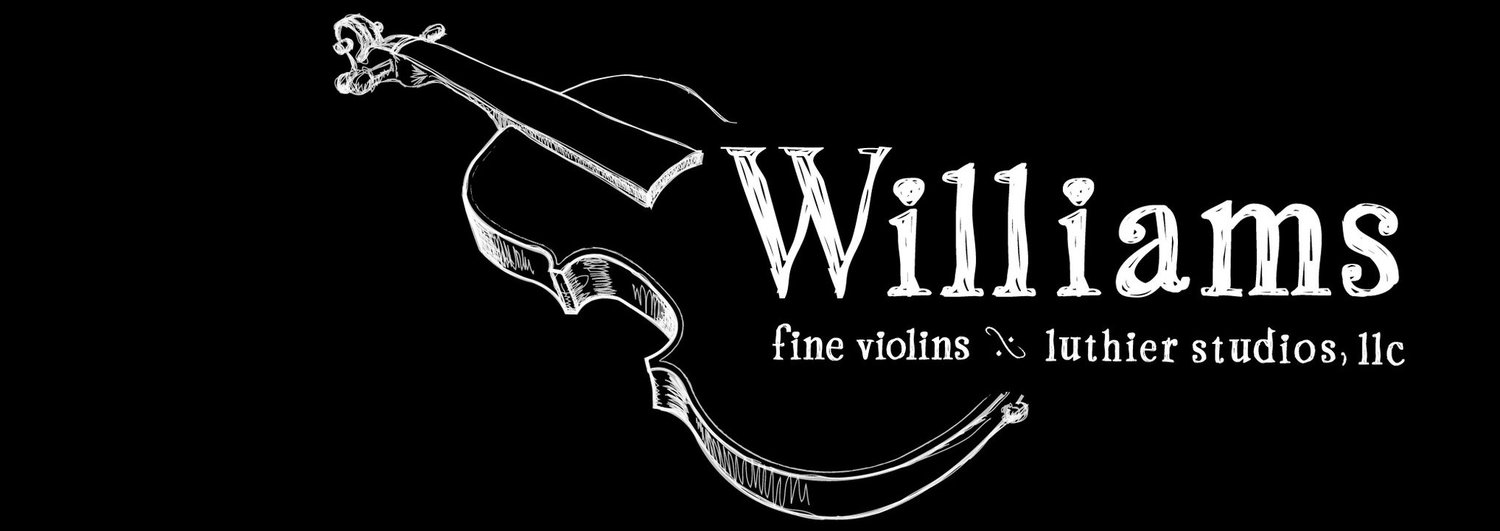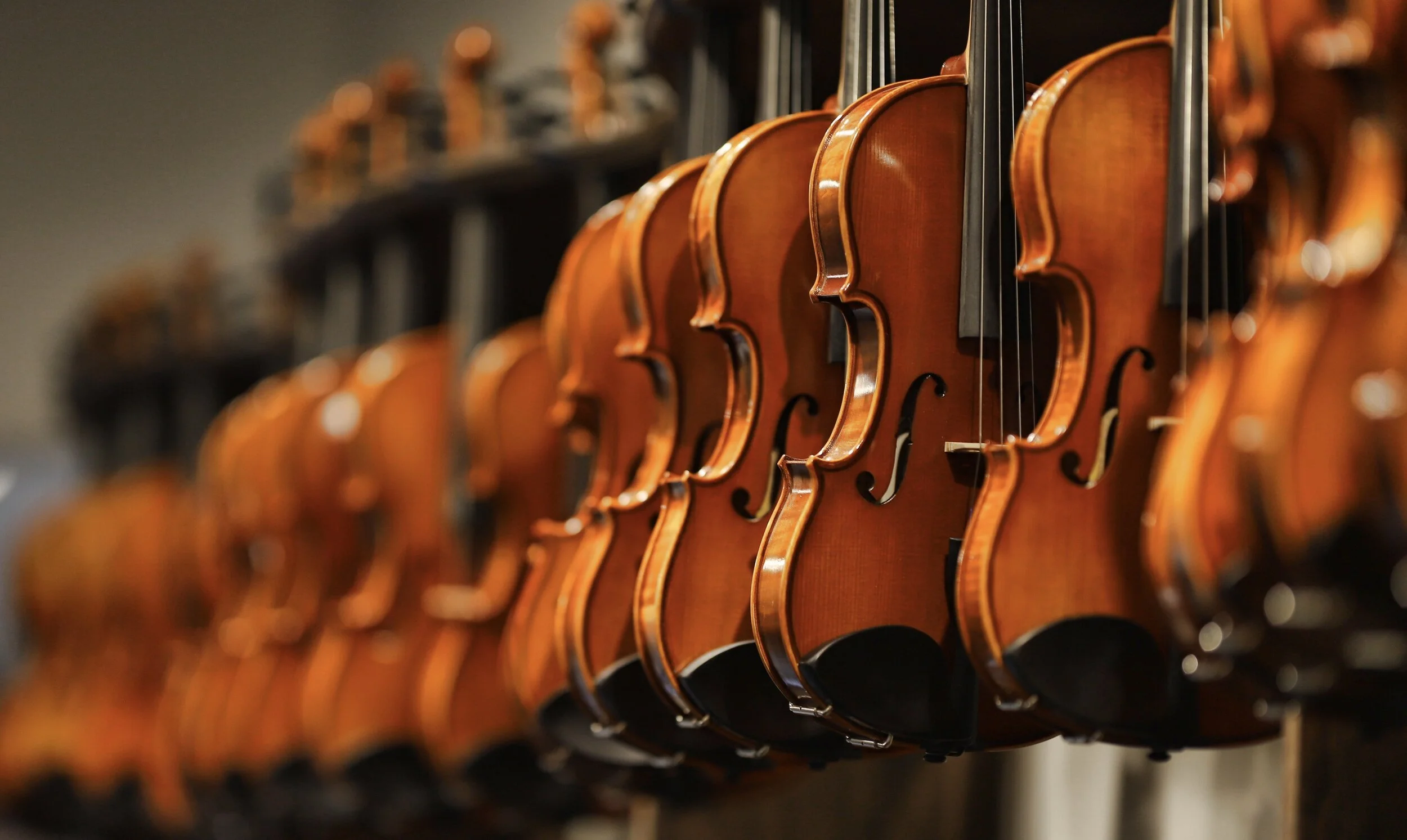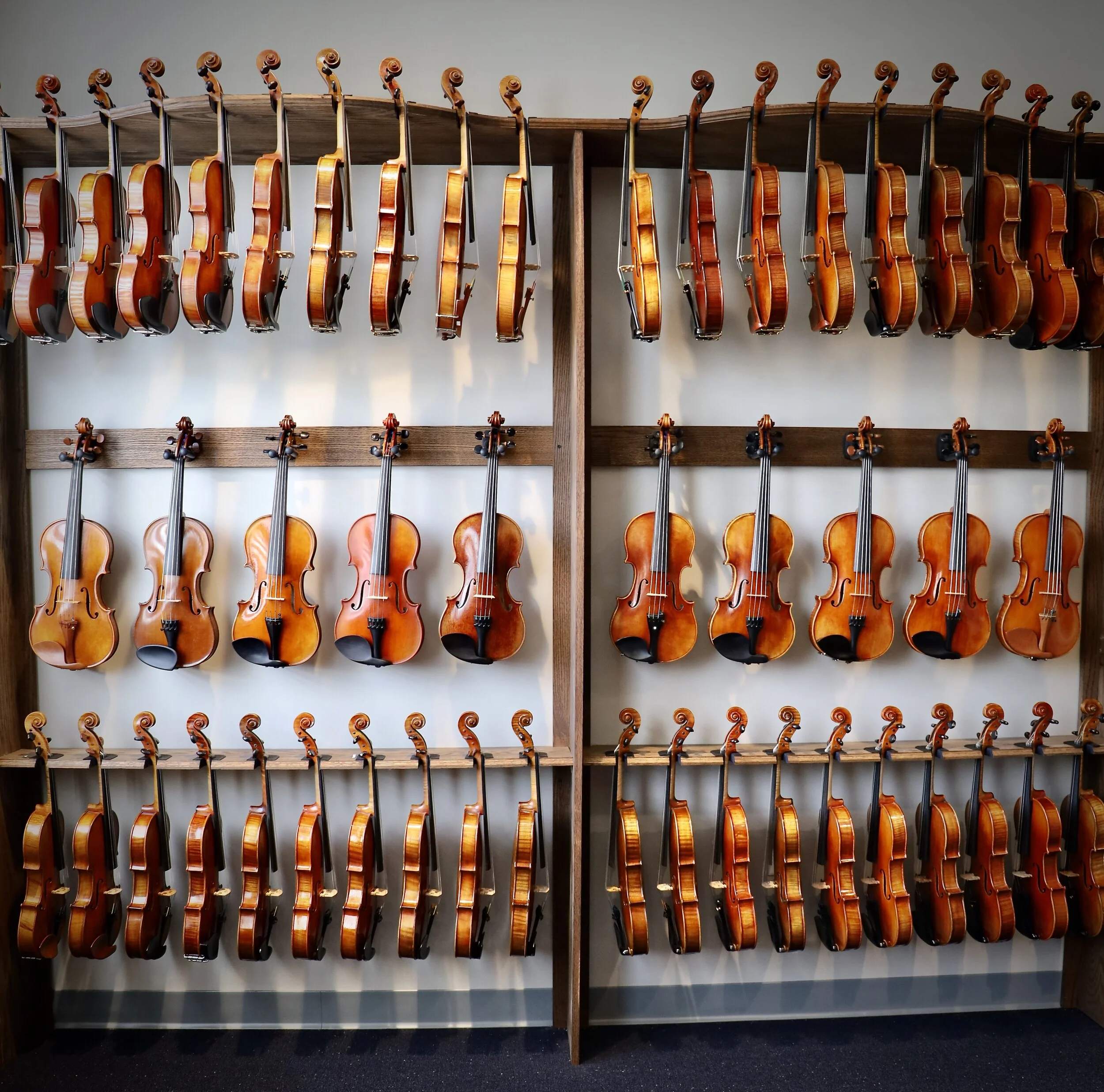BUYER’S GUIDE
Our inventory is constantly changing, with exciting new additions consistently entering our shop! Stop on by to see what fine violins, violas, cellos, and basses we have to offer today.
Williams Fine Violins Instrument & Bow Buyer's Guide
Important Considerations
Know the reputation of the seller. If you have any problems or questions, will they be able to help you?
Check the quality of the instrument and bow you are considering. Will it need repairs to make it playable or is it fully adjusted and ready to go?
Your friends and instructors have valuable opinions but remember: this is your instrument and your money!
When auditioning a new instrument, first use your old bow to help narrow the field.
If you have found several instruments that are acceptable to you, have another musician play them so you can hear them from a distance.
The more instruments and bows that you are able to audition in one place, the better your final selection will be.
With permission, take the instrument home for a few days to try it out in familiar settings. Take it to a rehearsal or private lesson.
Definitions and Terms: How to Describe an Instrument's Tone and Playability
Clear, Smooth: Pure and clean, lacking flaws which would break up the sound.
Unclear: A grainy, fuzzy quality, as if there were "white noise" in the background.
Hard, tight feel: The sounds has an edge to it and a solid core. Direct and penetrating.
Mellow, soft feel: Sound is less defined but seems to swell in all directions with a sweet, less edgy sound.
Dark: Like deep red velvet, with a rich, tenor quality. Favors the lower register.
Bright: A light feeling, treble sound. A little brash. Favors the upper register.
Even: The tone has the same quality on all four strings, to the point that it is difficult to tell when the player changes strings.
Uneven: Each string, and sometimes each note, has a different quality, as if the strings belong to different instruments.
Nasal: A slightly pinched sound, like the vowel sound "eee".
Open: A more free timbre, like the sounds "ah" and "oh".
Ringing: The sound projects out of the instrument and fills the room. Instrument vibrates very well.
Muted: The sound seems to stay inside the box and not carry very far. Instrument seems not to vibrate.
Round, Full: A complete sound with no aspect lacking, as if it were a perfect circle.
Hollow: A less satisfying sound that is small and lacking a wholeness.
Projecting, Strong: The sound penetrates the entire room and can be heard from a distance.
Close-up, Personal: The sound is very personal and is not heard at a distance.
Quick, Responsive: Instrument sounds quickly and is able to do all the "tricks".
Slow, Unresponsive: Instrument is sluggish and requires a concentrated technique.
Easy, Comfortable: Physically easy to play, easy access to upper positions, easy bow clearance, proper weight, helpful size.
Uneasy, Uncomfortable: Physically difficult to play, access to upper positions difficult, poor bow clearance, too heavy or too light, size is awkward.
Bow Checklist
Does the bow feel heavy or light?
Is the bow balanced towards the tip or towards the frog?
Does the stick of the bow easily "bend" when playing? Does the stick feel "soft"?
Is the stick of the bow not easy to "bend" when playing? Does the stick feel "stiff"?
Is the stick round or octagon in shape?
Spiccatto and staccatto playability: Does the bow "fly" off the string as desired?
Legato playability: Does the bow "stick" to the strings well? Does it play smoothly? Does it "jitter" when played?
Does the bow "track" well? Does it stay in one place on the string or does it move all around, not able to stay on one track?
Does this bow play well on multiple instruments or just your own?
Is the bow made of pernambuco, brazil wood, carbon fiber, or something else?
Is the frog of the bow made of ebony, bone, ivory, or something else?
Are the metal parts of the bow in nickel, silver, or gold? Is the tip plate made of bone, ivory, or metal?
Is the grip comfortable? Is it wrapped in nickel, silver, gold, or tinsel? Is the leather grip cow, lizard, or another kind of leather?
Is this bow better or more useful than your last bow? Will this bow replace your last bow or will you use it for a particular event, ensemble, or style of playing?
Does the bow make playing easier or more difficult? Does it invite you to play more?
To State the Obvious
Only work with a reputable violin shop that truly works on, repairs, understands, and specializes in violins, violas, cellos, double basses, and their bows. Generic music stores that also sell guitars, pianos, band instruments, drums, and the like, are not specialists. These stores are staffed by well-meaning musicians who are seldom string instrument players and are commonly not trained or experienced luthiers. The instruments and bows in most generic music stores and online are not always the best price and value and are usually either in very poor condition or set up in such a way that inhibits playability. Patronizing a full-service violin shop, such as Williams Fine Violins, will guarantee a positive experience with responsible professionals who are dedicated to you and to the instruments and bows they service and sell.
Williams Fine Violins stands behind our instruments and bows with a 100% trade-in/trade-up policy. Assuming that the instrument or bow you purchased from us is not damaged or broken, when you are ready for an upgrade in quality, you will receive 100% of the instrument or bow's sale price when you trade it in for an instrument or bow of higher price. This is because we are confident that what we sell, when cared for, will either hold or increase in value over the years.



